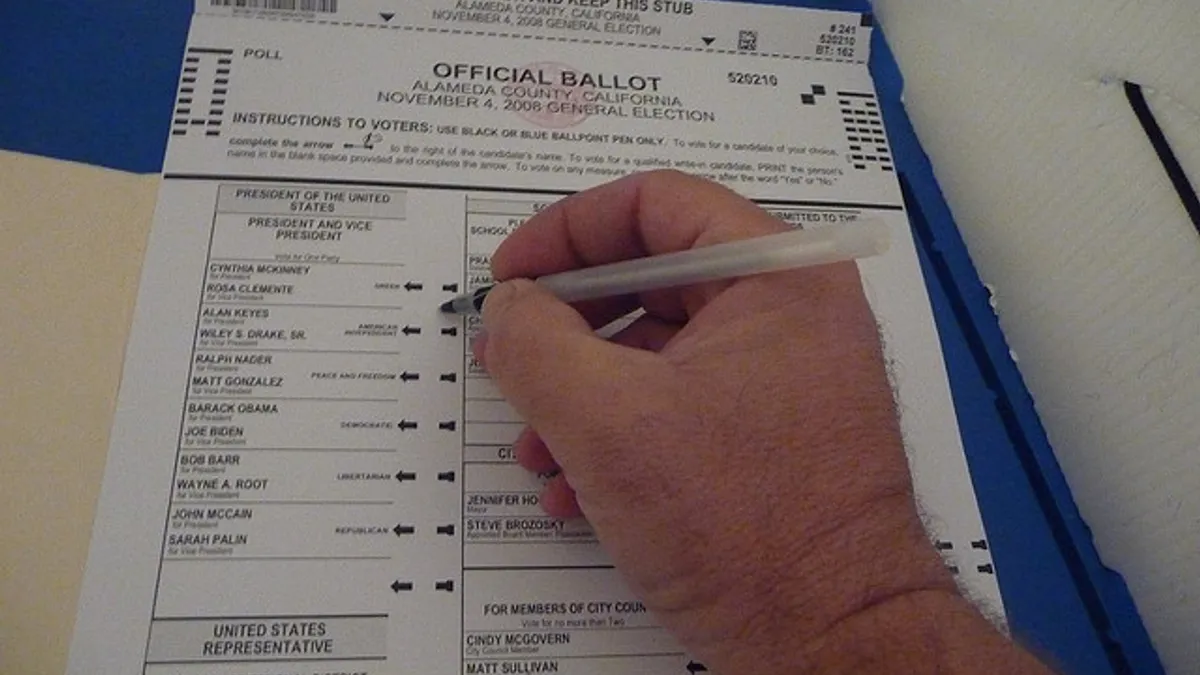Dive Brief:
- In next week's election, Arizona voters will decide on a statewide expansion of a voucher-like program known as the Empowerment Scholarship Account — which currently provides public funds for private schools to a potential pool of 30,000 public school students — to all of Arizona’s 1.1 million public school children, The Arizona Republic reports.
- Proponents claim that ESA funds provide financially strapped families with greater school choice, while opponents say the current program has done the opposite — that’s it’s favored the wealthy over the poor and a statewide expansion will only widen the gap.
- A recent analysis by The Arizona Republic finds that those who benefit most from the pilot program are, in fact, students from wealthier and higher-performing school systems. Specifically, 70% of ESA funding pays for students from A- and B-rated school districts to attend private schools, while 7% of those funds assist students from districts with a D or F rating. The paper found similar disparities for high- and low-poverty schools.
Dive Insight:
School choice options that allow students to use public funds to pay for a private school education gained traction in the early 1990s when Milwaukee’s Parental Choice Program was put in place. Since then, so-called vouchers or voucher-like programs have come and gone in many parts of the U.S. and now account for nearly 200,000 students in 17 states and Washington, D.C.
More than 90% of those students are in so-called voucher programs, which provide parents with publicly funded vouchers they can use to pay for a private school education. The remainder are in education savings accounts, such as Arizona’s ESA, that allow for public funds to be used for various forms of schooling, including online learning, tutoring and private schools.
All in all, voucher programs represent a very small percentage of students enrolled in the gamut of school choice options (e.g., magnet, open enrollment, and charter schools), and despite claims that they benefit low-income students, students with disabilities, and those relegated to failing schools, the research shows they’ve been marginally successful, if at all, and are more likely to increase school segregation.












